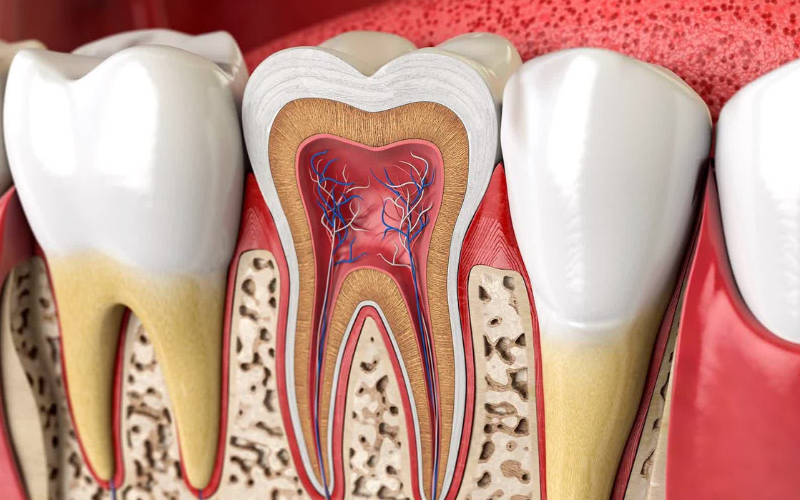
An unexpected yet excruciating toothache is frightening and intolerable. It frequently indicates a major tooth problem that has to be treated right once. However, what should you do if your day is interrupted by severe tooth pain? Have a look at what to do, what to anticipate, and how an emergency root canal can be helpful.
Identifying Dental Emergency Cues
While not every toothache necessitates an urgent root canal, you should act right away if you encounter any of the following signs:
- Excruciating, ongoing tooth pain that gets worse when you chew or put pressure on it.
- Swelling around the jaw or tooth, which can turn into an infection.
- Persistent & extreme sensitivity to heat and cold.
- A pus discharge or gum abscess signals that an infection has spread.
- A tooth’s discoloration or darkening can be a sign of nerve injury.
Things To Do Before Visiting a Dentist
Here’s how to deal with the discomfort until you see a dentist if you think you need an urgent root canal treatment.
- Rinse with warm salt water to help kill bacteria and minimize swelling.
- To reduce discomfort, take over-the-counter medications such as ibuprofen.
- To ease discomfort and lessen inflammation, use a cool compress on your cheek.
- To avoid making the problem worse, refrain from chewing on the afflicted side.
- For short-term relief, apply numbing gel or clove oil.
According to studies, more than 15 million root canals are done in the US each year, preventing the extraction of innumerable teeth.
How Does an Emergency Root Canal Work?
In order to stop additional infection and relieve pain, a root canal removes damaged or infected pulp from inside a tooth, helping to restore oral health. What takes place during an emergency root canal is as follows:
- Numbing the Area: The dentist apply local anesthesia to ensure a pain-free procedure.
- Removing the Infection: A small opening is made in the tooth, and the infected pulp is extracted.
- Cleaning and Disinfecting: The root canals are thoroughly cleaned to eliminate bacteria.
- Filling the Tooth: The empty space is sealed with a special material to prevent future infections.
- Crowning (If Needed): If the tooth is weakened, a dental crown may be placed for protection.
Most patients experience instant relief from pain after the procedure, making it a game-changer for emergency cases.
What Happens If You Ignore an Urgent Root Canal Treatment?
Delaying treatment can lead to serious complications, including:
- Abscess formation, causing severe infection and swelling.
- Bone loss around the affected tooth.
- Tooth loss, requiring extraction and costly replacement options.
- Spread of infection, potentially leading to systemic health issues.
Seeking prompt treatment can prevent these complications and preserve your natural tooth.
So, a sudden toothache isn’t something to ignore—it’s a signal that something is seriously wrong. If you feel persistent pain, swelling, or sensitivity, an emergency root canal might be the best solution.
Acting fast, managing pain at home, and consulting our dentist immediately can save your tooth and spare you from further complications. Schedule an emergency dental visit today.


